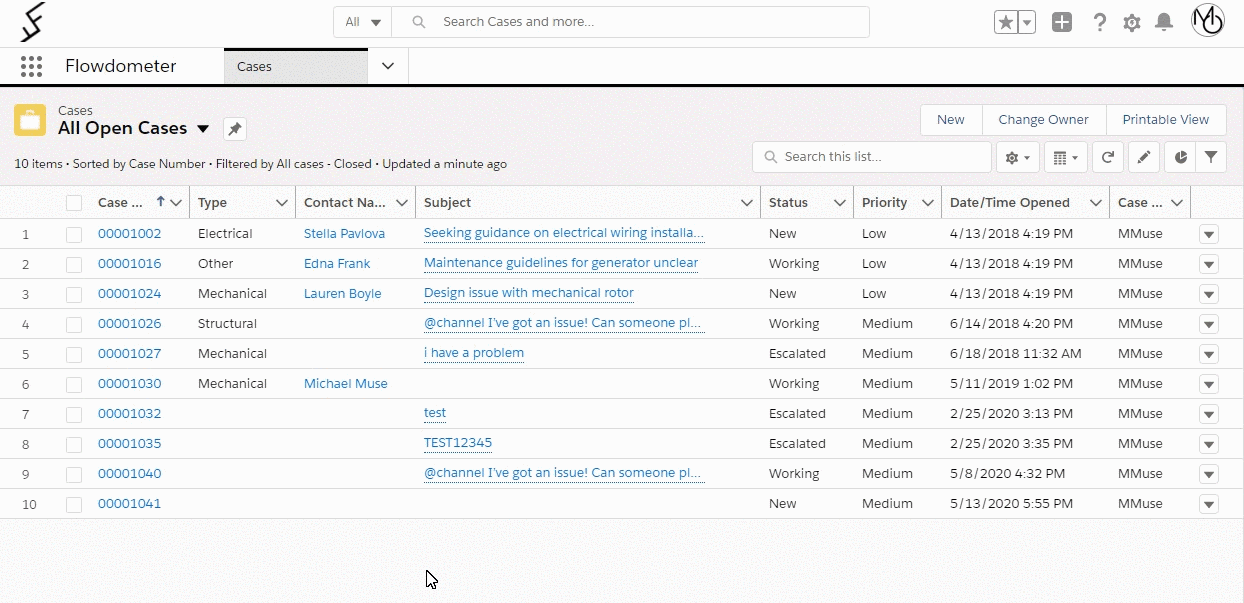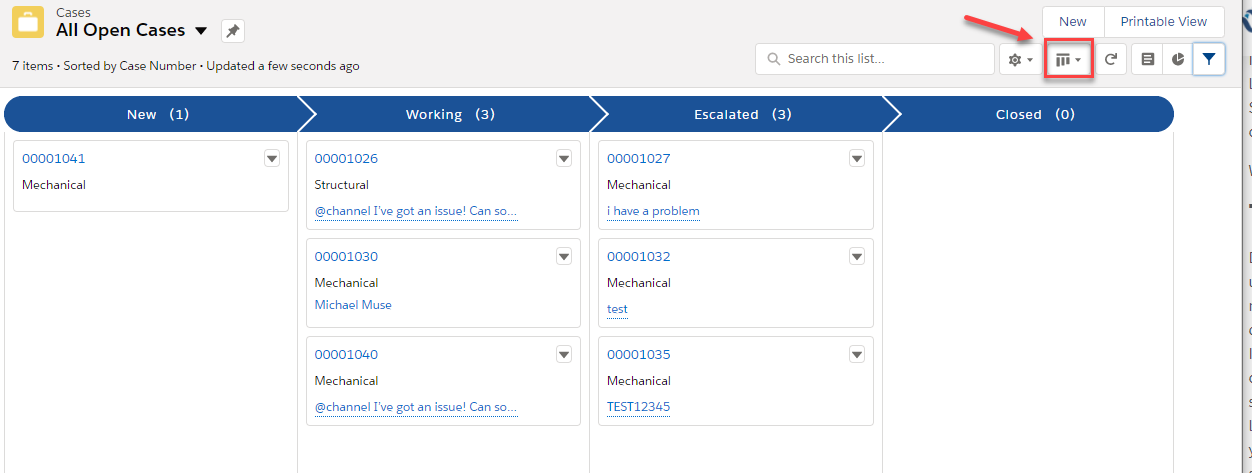o understand List Views, we need to first understand what objects are, because a List View is really a way to see a set list of a single object. Here's our primer for that: What are "Objects" in Salesforce?
What is a List View?
In Salesforce, if you click on the tab for an object, you get a default List View for that object, often ‘Recent <objectname>s’. This is a way for you to quickly browse objects. Many objects come with some standard List Views in addition to ‘Recent’: ‘My <objectname>s’ or ‘All <objectname>s’. For example, on the tab for Cases:

But don’t be limited by these default options - you can create your own and customize them deeply to make for a powerful workflow management list.
List Views vs Reports:
So why not just create a report? Isn’t it the same thing?
Actually, Reports are more powerful. But stay with me, we like List Views. One of the first things to keep in mind is you can only have 1 object in a List View, where reports can mix objects. This simplicity actually helps us, making the process of creating a list easier overall.
List Views are easy to make
Figuring out the Report Type or Object Model can be daunting in the Reports tab. In List Views, you just click the gear and either ‘Clone’ or ‘New’, depending on how much you like the current List View:

List Views allow quick mass-editing
This feature blows people’s minds the first time they see it. Say I want to update 4 records, all to have the same value in one field. Watch this:

*Note that if you have different record types in your object, you’ll need to specify one Record Type in your List View Filters to have this functionality. Let’s look at filters next.
Filters and Creating To Do Lists
Filters
Filters are where you give your List View its identity. Using the filter Icon in the top right, you can set advanced things like Name Contains, Date Is Less Than TODAY, etc. You can even set AND/OR conditions in Filter Logic:

List Views as To Do Lists
We’ve found the best way to use filters is to give your List View an identity that represents a queue of work. So these might be ‘Open New York Q1 Opportunities’: where you’d filter on a Close Date = NEXT QUARTER, and Closed = False). Note that second filter - we’ve picked an “exit criteria” for our workstream - this is, simply, the way we know we’re done working with it. We close it. You can be even more clever. Make a list called “Leads Missing Website” and use “Website = <blank>”. Your Ops team can work down this list by filling out the website. When they refresh the list, the ones they’ve filled out will disappear. They’ll then try to work this list down to zero items. And if they do, and more come in, the list will grow again.
Once you’re happy with your main view, don’t forget to pin it so it’s the first thing you land on when you open the tab for this object:

How to change the visual interface of List Views
If you’re interested in changing the columns, just click on the gear, and ‘Select Fields to Display’:

You’ll be able to reorder the columns as needed. Then, click the column header to sort your list. You can only sort by one column at a time.
In addition to the basic/default Table view, you have a couple other useful options.
Kanban
Salesforce Lightning has a Kanban board view you can access just by clicking on the view icon and toggling:

This view requires you to choose a picklist field to split the records on, in this case, Status. Once you do, it does a few cool things. One, records becomes draggable/droppable. This is one of the very few places in Salesforce where you’ll be able to edit a record in one click (and drag) vs three (edit, change, save). It can also summarize any numbers on your column headers, like the sum of Opportunity dollar value by Stage:

Split view
Split view just allows you to click into the record without losing your List View at the left. This is useful if you’re clicking in and out of a few different items in your list in rapid succession. Try it out!
Lastly, check our our guide on how to build a simple snooze button for List Views in under a minute!
Workflow Home Base
As you can see, List Views are powerful for working out of, vs a report which is more static and harder to use if you expect to edit individual records. Your team should have very clear list views that encapsulate their work. This will allow managers to audit their progress and keep things moving along. Email Notifications and spreadsheets are not the place to keep your work!
Lastly, If your operations team wants to work out of Salesforce List Views, but doesn't seem to have a good object built in for them (like Opportunities), consider adding a custom object for other teams in Salesforce.



